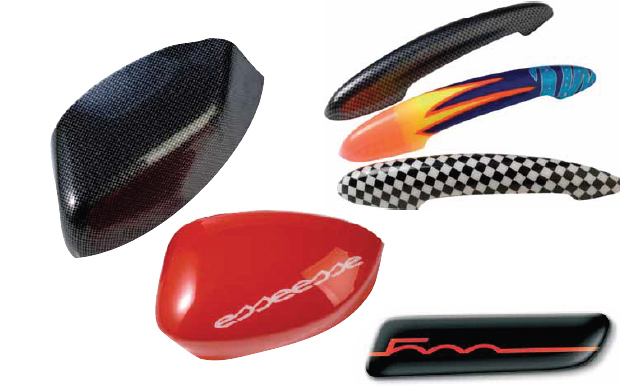
A new development from 3M is claimed to revolutionise paint detail on vehicles with its design possibilities
Anew concept in vehicle enhancement solutions has been introduced by 3M, which will improve the appearance and appeal of vehicles. The concept offers unlimited design possibilities to OEM designers and stylists – and importantly, it is economical.
Known as Specialty Trim Parts (STP), the concept has been developed in Italy by a specialist 3M team. Led by Carlo Muller, this development is able to produce just about any design aesthetic for any component without compromise. Customisation and personalisation becomes do-able at any volume – more affordably than conventional means that require high investments in tooling or intensive application controls.
Thermoforming using thermoplastic polymers with a pre-screenprinted design is nothing new. However, what is astonishing is that 3M STP is able to do this in a way maintains design geometry as required (no unwanted distortion effects) and offers excellent print quality. Furthermore, there is no cracking in the colour layer during deep draw forming of complex parts and there is precise colour registration of the image or graphic.
How the process works
Compared with alternative methods, STP is produced via a fairly simple process. Low tooling costs make small series production affordable and small and large parts can be produced with the same equipment and process. Prototyping is fast and flexible – existing parts can even be used as tool forms initially, allowing part appearance assessments to take place simply. The STP concept will be available in thicknesses from 0.4mm to 8mm and the maximum dimensions are: width (x) from 0mm to 2000mm; length (y) from 0mm to 1500mm and height (z) from 0mm to 700mm.
STP components can be supplied in different ways and there are three categories: wrapping, shells and stand-alones. In the first category, a printed polymer is wrapped around the mould (with an optional undercut). For example, a door handle can use the existing injection moulded part. With the shells, a printed polymer shell is attached to a final part in a further assembly step. For example, a door mirror can be applied to the existing part. The stand alones may be attached to other components.





































